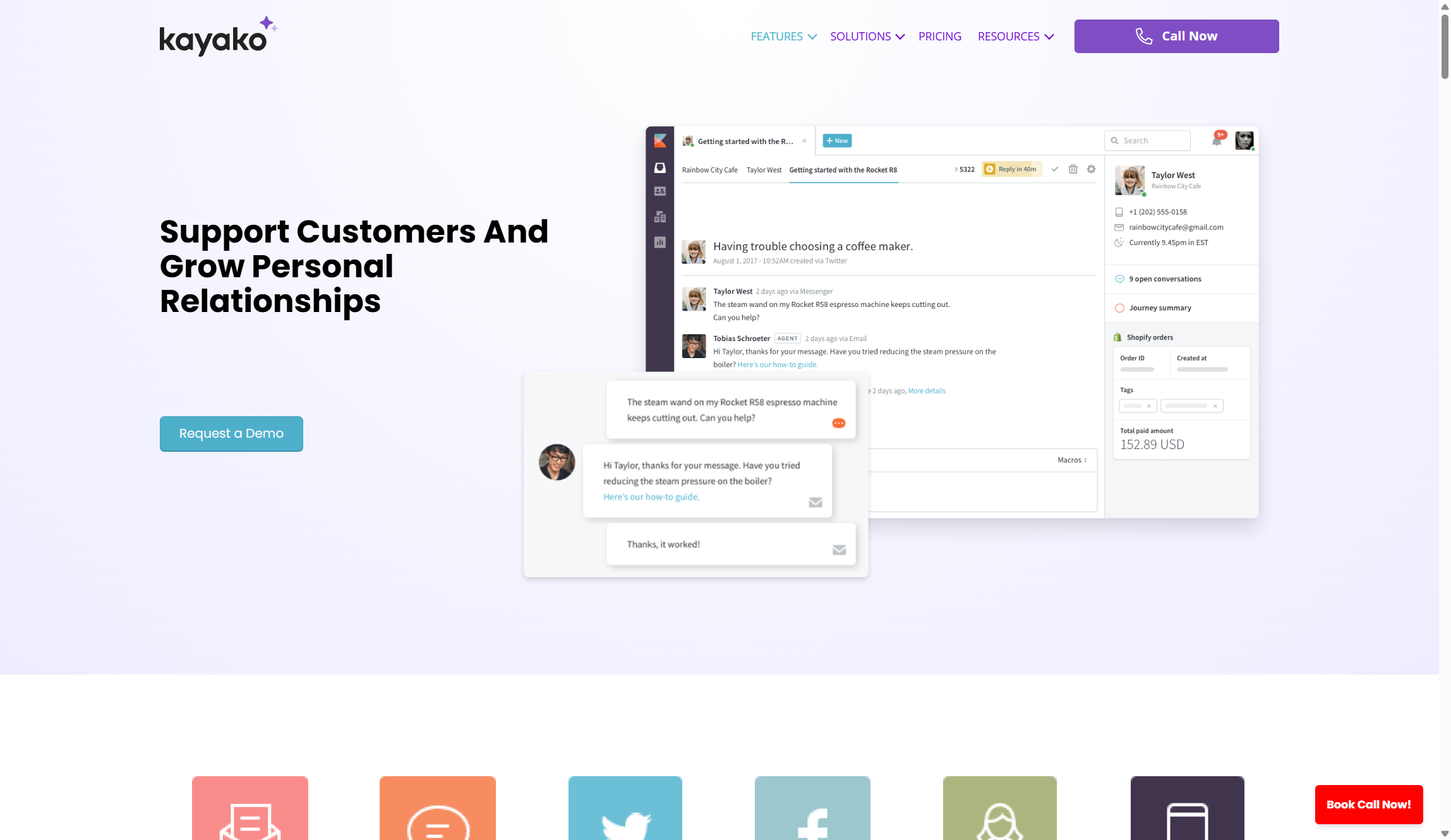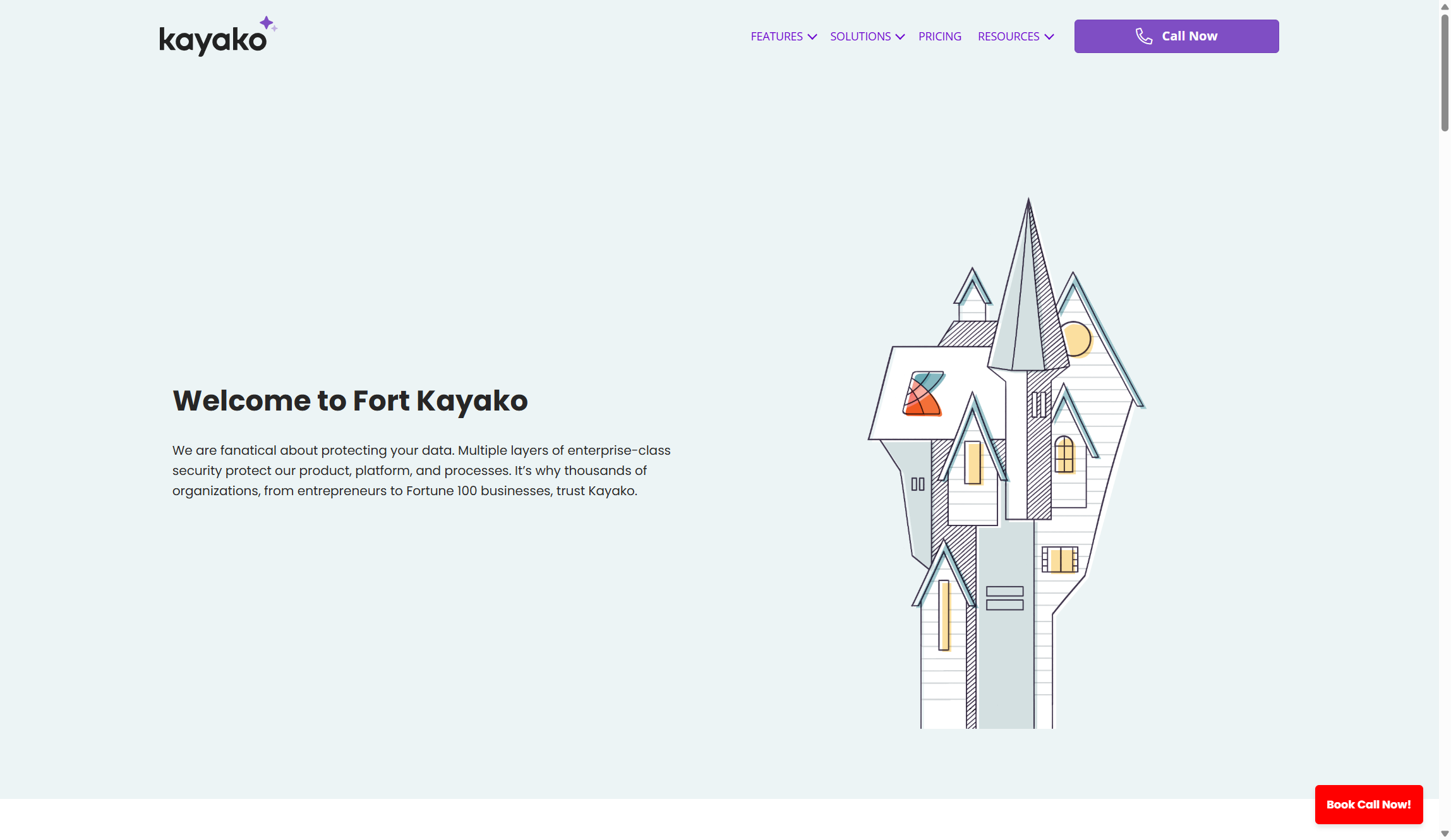TechRadar Verdict
Kayako offers solid help desk functionality with strong ticketing and collaboration features, but recent price increases have made it less attractive for smaller businesses. While its unified customer view stands out, you should weigh the high per-agent cost against their specific support needs.
Pros
- +
Unified customer support dashboard
- +
Robust filtering and reporting
- +
Knowledge sharing capabilities
Cons
- -
Opaque pricing structure
- -
Limited customization options
- -
Buggy performance
Why you can trust TechRadar
Kayako is a complete customer service help desk platform designed to improve support operations. Founded in 2001 and based in London, it serves over 50,000 customers in more than 100 countries. Notable users include Peugeot, De Beers, and NASA. Kayako features an AI-enabled help desk management system that changes how companies support their customers.
Kayako helps businesses manage inquiries through email, live chat, social media, and web forms, all from one dashboard. Its strong ticketing system lets support teams create, track, and resolve issues efficiently. Automation features take care of repetitive tasks, allowing agents to focus on complex problems. The platform also offers collaboration tools that help teams work together smoothly, breaking down barriers to enhance customer interactions.
You'll find Kayako useful if you want to reduce response times and boost customer satisfaction. It aims to eliminate "content friction," "contact friction," and "context friction." This makes it easier for customers to find solutions, reach out through their preferred channels, and avoid repeating information. With features like SingleView™, you can see a customer's full journey and interaction history in one spot for more personalized support.
Kayako is ideal for growing businesses looking to scale customer support without losing quality. Organizations of all sizes use the platform, from small teams of 10-50 employees to large enterprises with over 1,000 staff. If you're in IT, computer software, or e-commerce — key sectors for Kayako — you'll likely find its features match your needs. The platform's capacity to support growth makes it a reliable long-term choice for businesses planning to expand their support operations.

Kayako: Plans and pricing
Kayako has a tiered pricing model for different business sizes. But the company has recently changed its pricing structure. Before, there were three main tiers:
- Essential: $39 per agent per month
- Professional: $99 per agent per month
- Enterprise: Custom pricing, billed annually
The Essential plan offered core features like a ticketing system and unlimited AI-suggested responses. The Professional plan included knowledge base audits, a self-learning mode (limited to 100 tickets per month), multiple chatbots, API access, and integrations.
The Enterprise plan had the most features, such as unlimited self-learning mode, ticket summaries, ticket responses co-pilot, audio file transcriptions, multilingual content, powerful reporting, and the ability to change the Kayako/Atlas logo.
Sign up to the TechRadar Pro newsletter to get all the top news, opinion, features and guidance your business needs to succeed!
Now, Kayako has removed the Professional plan and updated the pricing for the Essential and Enterprise plans. The new pricing isn’t on the website, but you can schedule a call with their sales team to get a tailored quote.
There used to be a 30-day money-back guarantee, but it’s unclear if that still exists. Kayako also offered a 14-day free trial for new users, which now seems to have been replaced by an interactive demo during sales calls. This is disappointing, as a demo may not fully capture the platform experience like a trial would.

Kayako: Features
Kayako provides a full suite of customer service tools to streamline support and enhance experiences. It merges classic help desk features with modern, AI-driven capabilities across various channels. At its core, Kayako offers ticketing, live chat, self-service options, and collaboration tools. Together, these create a unified support ecosystem suitable for businesses of all sizes.
What makes Kayako unique is its SingleView™ technology. This feature visualizes the entire customer journey in one interface. With the new AI-driven ticket summaries and suggestions, support teams can offer personalized help. The platform balances automation with human interaction, allowing businesses to grow their support without losing quality or connection.
Ticketing system
Kayako's ticketing software turns traditional email support into a collaborative workflow that boosts team productivity. Agents can create, track, and resolve customer issues by quickly assigning tickets to the right people. Features like AI-suggested responses, ticket summaries, and smart workflows help teams reduce repetitive tasks and focus on high-value interactions.
The system also supports collaboration among agents, internal experts, and external vendors directly within tickets. Every input is saved for future reference, ensuring clear communication and thorough problem-solving. This, along with features like canned responses and internal notes, helps businesses resolve complex issues faster while keeping a complete record of all interactions.
Live chat features
Kayako Messenger delivers a user-friendly live chat experience that feels like chatting with friends. This real-time tool allows support teams to treat customers as individuals, fostering personal connections. The live chat function can handle multiple conversations at once, enabling agents to manage high inquiry volumes without losing quality.
Proactive engagement features help businesses convert website visitors into customers by starting conversations based on user behavior. It ensures timely support during key moments in the customer journey. Kayako also provides live chat support for mobile sites and apps, allowing customers to get help wherever they are, which boosts satisfaction and shortens resolution times.
Self-service portals
Kayako's self-service options let customers find answers on their own through an easy-to-search repository of articles, videos, and FAQs. The knowledge base lowers ticket volume by enabling customers to resolve common problems without agent help, especially when support teams are offline. The platform suggests relevant content as customers type, providing instant answers and cutting wait times.
The self-service portal is fully customizable, enabling businesses to create multiple Help Centers with tailored content and branding for different products or audiences. Help Center Analytics tracks search terms to spot gaps in content, leading to ongoing improvements. This not only raises customer satisfaction but also cuts operational costs by reducing agent ticket volume. Some companies report a 50% decrease in tickets after using Kayako's self-service tools.
SingleView technology
Kayako's SingleView™ technology offers a complete view of the customer journey in one easy interface. It combines all customer interactions and activities—including site visits, purchases, shipping history, support inquiries, and self-help searches—giving agents context for more personalized support. By avoiding the need to switch between systems, SingleView™ allows for quicker, more accurate responses.
A comprehensive view of customer data enables support teams to provide proactive, personalized support with every interaction. Agents can see when messages are read, view all active conversations for each customer, and access past events for better context. These features help businesses avoid repetitive questions and create seamless experiences that strengthen customer relationships and loyalty.
Automated workflows
Kayako's automation features save time by managing routine tasks like routing conversations, updating ticket statuses, and sending notifications. These processes ensure consistent handling of inquiries while allowing agents to focus on complex issues. The platform's macros and canned responses let teams send predefined, personalized replies to common questions with one click, improving response times.
SLA management tools help teams stay on track by monitoring performance against internal goals for response and resolution times. Automated SLA notifications remind agents of deadlines, ensuring they never miss critical timeframes. Smart routing prevents multiple agents from responding to the same issue by automatically combining inquiries across channels and directing them to a designated agent. These features have helped businesses cut response times by up to 40%, enhancing customer satisfaction and operational efficiency.

Kayako: Analytics
Kayako's reporting and analytics turn help desk data into useful business insights. It offers dashboards that show key performance metrics at a glance. This helps support managers track customer satisfaction, measure team performance, and find areas for improvement. With over 100 ready-made reports, businesses can quickly evaluate agent productivity and customer effort scores.
The analytics suite includes strong SLA management tools. These help teams track their response and resolution times against goals. Automated alerts notify agents of upcoming deadlines, so they never miss important timeframes. Kayako's reporting also gives detailed insights into customer behavior and support performance. Some organizations have seen CSAT score improvements of up to 18 points after using Kayako's analytics.
In addition to standard reporting, Kayako lets teams build custom dashboards for deeper analysis. The Help Center Analytics feature tracks search terms to find gaps in self-service content. This allows for ongoing improvements to meet customer needs. Some companies report a 50% drop in ticket volume after using Kayako's self-service tools.
With new AI features, Kayako's analytics are even more effective. The system can spot patterns in thousands of support tickets. It identifies issues before they affect customer satisfaction. This lets support teams tackle root causes instead of just symptoms. For instance, if the platform sees a customer frequently checking their order status, it can automatically suggest proactive communication strategies.

Kayako: Ease of use
The sign-up process for Kayako wasn’t as smooth as we would have liked. We got errors after filling in the registration form and couldn’t access our account. We had to email sales support to gain access, but it took a few days for the issue to be resolved.
However, while we weren’t very impressed by the sign-up process, we were very impressed by what we found when we were eventually able to log in. Kayako is one of the most user-friendly helpdesk solutions we’ve looked at. It’s also one of the fastest in terms of how quickly pages load and how user interface elements respond to interaction.
We liked the display of the customer journey for each ticket, which you can access by scrolling up from the latest message in any conversation you’ve selected. There are so many different elements that you can interact with for a conversation in terms of how you view or update it, but Kayako is designed in such a way as to not make it feel overwhelming. It’s the sort of interface that you can start using straight away, picking up new things as you go along.
It’s not just the conversations that feel this way—all sections of the Kayako dashboard are the same. Settings for web apps can sometimes be intimidating places that take some time to get used to, but here again with Kayako, everything is clear and easy to understand.

Kayako: Support
Unfortunately, we found the process of getting support as disappointing as the process for signing up for a Kayako account. The help widget in the dashboard says to use the form at support.kayako.com for technical support but doesn’t link directly to it.
Once there, you have to log in to be able to lodge a support ticket. We initially assumed we’d log in with the same credentials we’d used to log in to our dashboard, but we had to create a separate support account.
The verification email that arrived after filling in the support registration form linked to a page on a Zendesk subdomain with no mention of Kayako that we could see. We had to return to the Kayako support page and then refresh it to find that we were actually logged in. But we weren’t impressed by the fact that getting access to support from Kayako involved signing up for a service provided by a competitor.

Kayako: Security
Kayako has a lot of built-in security measures, including two-factor authentication (2FA), role-based access restrictions, DKIM and SPF authorization of outbound emails, spam filtering, password policies, and the ability to authenticate logins against your own systems and third-party apps.
Layers of security protect the platform, such as SSL encryption, DDoS mitigation, and disaster recovery and redundancy strategies. The physical security of data centers is maintained through backup generators, state-of-the-art fire suppression systems, and background checks on all employees.
Kayako: The Competition
The online helpdesk space is very crowded, and Kayako has many viable alternatives, including Zoho Desk and LiveAgent.
Zoho Desk also has an extensive array of features but offers a free plan in addition to paid plans. It can be used with three agents, while at the other end of the scale, the Enterprise plan, which costs $35/agent/month, can be used with unlimited agents. All paid plans come with a 15-day free trial.
LiveAgent also offers four plans, including a free one, and a 14-day free trial. The free plan has no limit on agents but does have a seven-day ticket history limit. The paid plans range in price from $15/agent/month up to $39/agent/month and have no limits on ticket history.
Kayako: Final Verdict
We found ourselves quite conflicted about Kayako because, on the one hand, it is one the best online helpdesk solutions we’ve used, but on the other, it also gave us one of the worst registration experiences.
Kayako’s well-designed user interface and the performance of the web app made it so easy to use. It also has a great feature set and reasonable pricing.
But we had to contact support to be able to create an account and had to wait several days for that process to conclude. And when it came to reviewing support options, we had to create a separate account with a helpdesk competitor.
Once the initial registration and setup issues were resolved, though, we found Kayako a pleasure to use. If you’re having similar trouble, it’s worth persevering with.
We've highlighted the best ITSM tool.

Ritoban Mukherjee is a tech and innovations journalist from West Bengal, India. These days, most of his work revolves around B2B software, such as AI website builders, VoIP platforms, and CRMs, among other things. He has also been published on Tom's Guide, Creative Bloq, IT Pro, Gizmodo, Quartz, and Mental Floss.
You must confirm your public display name before commenting
Please logout and then login again, you will then be prompted to enter your display name.
